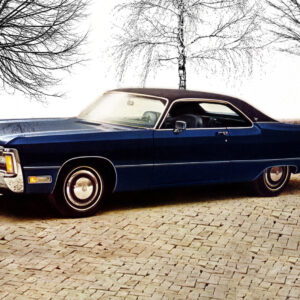
Picture this: you pull up to a gas station in the United States, and there it is, right in front of you – a sticker proudly proclaiming the presence of ethanol in the gasoline you’re about to pump. But what exactly is ethanol, and why is it mixed with your fuel? Let’s dive into the fascinating world of ethanol and uncover the real story.
Unveiling the Nature of Fuel Ethanol
Fuel ethanol is, essentially, alcohol. You might be surprised to learn that it’s the same substance found in your favorite vodka or any alcoholic drink for that matter. However, when used as a fuel, refineries add certain chemicals to render it poisonous and unsuitable for human consumption. They then blend this modified ethanol with gasoline. It should go without saying, but fuel ethanol is not a viable alternative to your beloved cocktail. And if you happen to bring drinks to the gas station, well, you probably have bigger concerns. So, let’s stick to driving responsibly instead.
Another point worth noting is that ethanol differs from methanol, also known as wood alcohol, which is inherently toxic. While methanol does find its way into some high-performance racing engines, it is not commonly used in standard fuel for street vehicles.
Ethanol does have a long-standing history in America. Over a century ago, Henry Ford designed the first Model T to run on ethanol or gasoline, making it the original flex-fuel vehicle. Ford’s decision was driven by the fact that gasoline was not easily accessible everywhere in 1908, whereas farmers could produce ethanol inexpensively to fuel their vehicles. In other words, you could have run your Model T on moonshine! Ethanol also experienced a resurgence during World War II when gasoline was strictly rationed.
Fast forward to the present day, and 97 percent of gasoline sold in America contains ethanol. However, the precise ethanol content may vary from state to state. While there are some states where you can find ethanol-free premium gas, in general, you can expect that gasoline sold in the United States includes around 10 percent ethanol.
The Role of Ethanol in Our Fuel
One of the primary reasons ethanol is added to gasoline is to enhance the octane rating. In simpler terms, higher octane gas has an increased resistance to detonation, allowing it to burn rather than explode. However, boosting the octane level of gasoline can be costly, which explains why premium fuel is more expensive than regular. By incorporating ethanol, the tendency of low-grade gasoline to detonate is reduced, enabling a larger portion of our national fleet to run on cheaper gas.
The presence of ethanol in our fuel also has a political dimension. Ethanol is predominantly derived from corn, crop waste, wood chips, or sugarcane. Many of these biomass sources are cultivated in politically important states. For instance, Iowa heavily relies on corn-based ethanol, which contributes $5 billion to the state’s economy and supports 47,000 jobs. It’s no wonder that virtually every presidential candidate who has won the Iowa caucuses since 1980 has pledged to support the continued use of ethanol in our fuel.
Unsurprisingly, the inclusion of ethanol in U.S. gasoline is mandated by Congress. The journey began with the 1990 Clean Air Act, followed by the 2005 Renewable Fuel Standard, which established minimum levels of renewable fuel usage. In 2007, Congress further raised the renewable fuel standard targets to reach 36 billion gallons by 2022. By 2014, the U.S. gasoline supply already incorporated 13 billion gallons of ethanol each year.
Notably, fuel ethanol has become a significant export for the United States, with quantities peaking at 30 million barrels per year in 2011. Since 2014, the annual export volume has remained steady at around 20 million barrels. Brazil, Canada, China, India, and South Korea are the primary destinations for exported ethanol.
Additionally, fuel ethanol plays a key role in E85, commonly known as flex-fuel. A wide range of vehicles are compatible with E85, which consists of 85 percent ethanol and 15 percent petroleum and other additives. Most vehicles capable of running on E85 can also use standard petroleum fuel.
The Pros and Cons of Ethanol
Now, let’s examine both the positive and negative aspects of ethanol as a fuel. On the bright side, ethanol is cleaner than gasoline, contributing to reduced emissions when blended with gasoline. Furthermore, the plant materials used in ethanol production absorb carbon dioxide during their growth cycle. Finally, ethanol is an energy-positive fuel, meaning that the energy obtained from it exceeds the energy expended during production (excluding the energy required for plant cultivation).
However, ethanol has its drawbacks as well. It has a lower energy density than gasoline, meaning that a gallon of gasoline contains more energy than a gallon of ethanol. Consequently, the more ethanol present in the fuel, the lower your vehicle’s fuel economy. Gasoline blended with 10 percent ethanol yields approximately 3 percent less fuel efficiency compared to pure gasoline.
Ethanol also has a higher propensity to evaporate compared to gasoline, and fuel evaporation is a significant source of air pollution. To address this, special vapor seals are necessary in fuel pumps and other equipment at refineries and distribution centers to prevent ethanol from escaping into the atmosphere.
Lastly, the land and resources employed for ethanol production are unavailable for other purposes. Brazil, in particular, faces this challenge as vast stretches of tropical rainforests have been cleared to make way for sugarcane cultivation, a primary source of ethanol in the country.
The Bottom Line on Fuel Ethanol
For the majority of drivers, ethanol has minimal impact on their vehicles. While you might experience slightly better mileage and performance with pure gasoline, it’s unlikely to offset the cost of purchasing non-ethanol fuel if it’s even available in your area.
According to the U.S. government, all gasoline-powered vehicles can safely use E10 fuel, which contains 10 percent ethanol. However, owners of classic cars have reported issues with ethanol causing deterioration in older rubber hoses, seals, and diaphragms. If E15 fuel is available in your region, vehicles manufactured after 2001 should be compatible with it. However, automakers have not certified all their vehicles for E15 usage, so it’s best to consult your owner’s manual to confirm compatibility.
Ultimately, if you own a car built after 2001, rest assured that ethanol won’t harm your fuel lines or seals. On the other hand, if your vehicle predates 2001, it’s advisable to monitor these components closely. Regardless, keep in mind that fuel lines and seals deteriorate over time, so replacing them with ethanol-resistant alternatives is a wise choice. Alternatively, if non-ethanol fuel is accessible, you can exclusively use that source.
From both a political and scientific standpoint, efforts are underway to develop more efficient methods of ethanol production. The focus now revolves around utilizing waste paper, sawdust, and fast-growing grasses, which are all superior alternatives to corn, given their reduced water and fertilizer requirements.
Imagine if we could produce fuel every time we mow our lawns – it would undoubtedly lead to significant savings for our nation.
This article was written for OnSpec Electronic, Inc. Learn more about their innovative products and services at OnSpec Electronic, Inc.



